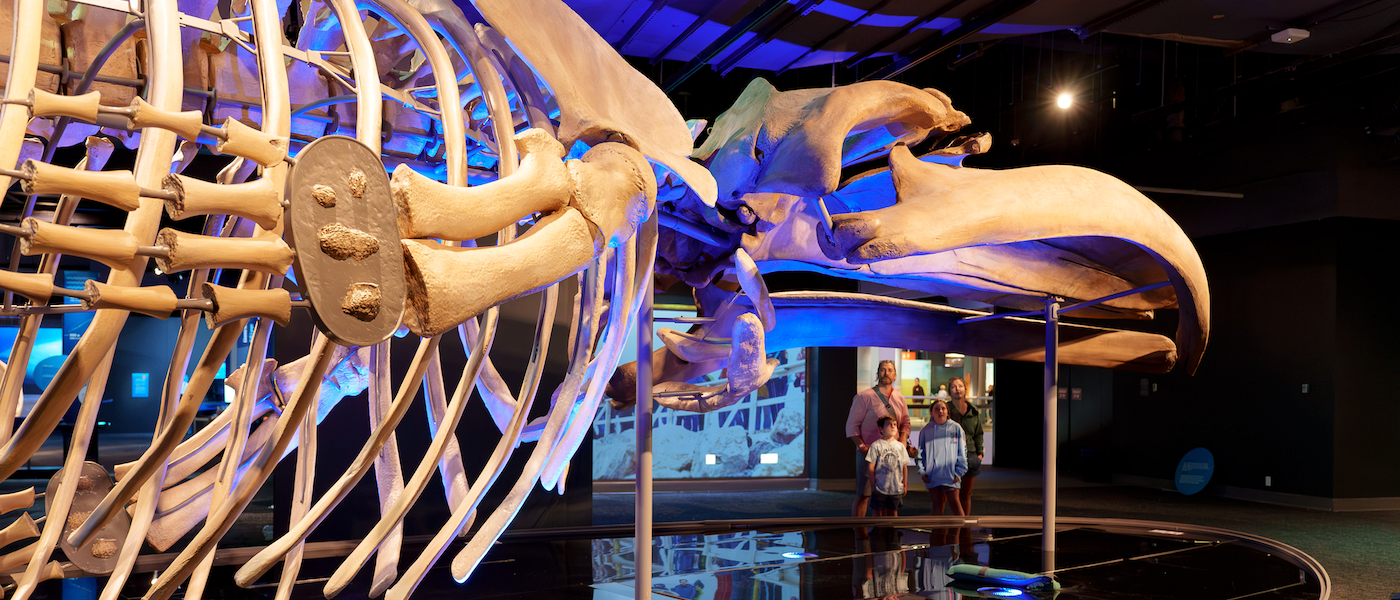How Blue Whale Came to Be
The story of LSC's new exhibition, Blue Whale: The World’s Biggest Animal, began in 2014 when nine blue whales died tragically, trapped in heavy sea ice in Canada’s Gulf of St. Lawrence. The sea ice prevented the whales from sinking to the bottom of the ocean, allowing Canada’s Department of Fisheries and Oceans the chance to spot them and report the tragedy. Conservationists believe there are only about 200 - 250 blue whales in that part of the North Atlantic, so losing nine of them at once was a terrible blow.
By springtime, one of the whales had washed ashore nearby in Trout River, Newfoundland. Local people weren’t sure what to do about the sudden appearance of an immovable, 60-ton sea mammal—which didn’t smell very good, at this point. But scientists from the Royal Ontario Museum saw a rare opportunity to study a blue whale up close, and thus turn the tragedy into an opportunity for education and research. They worked tirelessly with the community of Trout River to recover the endangered blue whale’s body.
After towing the whale’s body along the water to the nearby location of Woody Point, away from the Trout River townspeople, the team began the physically taxing task of separating the whale’s bones and organs from its blubber and flesh. It took a team of 10 people more than five days. They saved its giant heart, which is about the size of a compact car. They tagged each bone as it was freed from the carcass, in order to reconstruct the puzzle of the skeleton when the time came. They had to bury the bones in manure, sawdust, and dirt and leave them for more than a year in order for them to be free of flesh and safe to handle.
With DNA samples from the whale’s flesh, the ROM hopes to produce the first fully-sequenced blue whale genome. If the genome shows a lot of genetic diversity, that indicates the animal descended from a large, healthy population. Restricted genetic diversity indicates a small population. The genome could also reveal how much contact the western Atlantic blue whale population, with its very few calves, has with the larger eastern population.
From tissue samples collected from the whale, scientists can also learn about the feeding habits of the endangered Western North Atlantic population and assess the accumulation of toxins in its body that are known to impact marine mammals, including DDT, mercury, and flame retardants.
As a critically endangered animal, any information about the blue whale’s genetics, anatomy and links to other research projects will greatly benefit research on the conservation of the remaining population. The blue whale’s body contains clues to its life in the ocean, and its ancestors’ lives. Through continuing research, this whale tale will continue to inform scientists and conservationists for years to come.
Click here to learn more about the Blue Whale exhibition, here at Liberty Science Center through Jan. 5, 2025.
